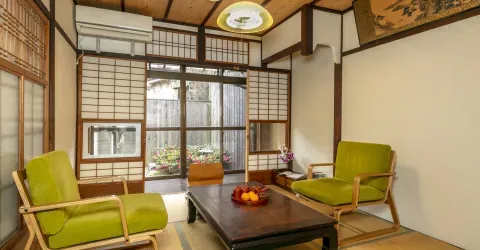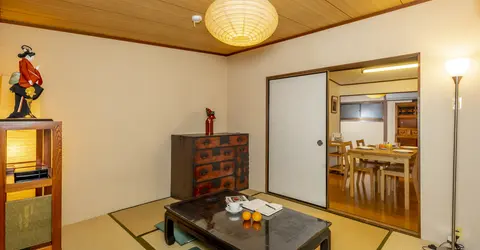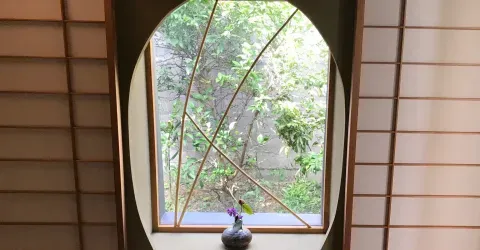Higashiyama South Walk
- Published on : 28/06/2024
- by : Japan Experience
- Youtube
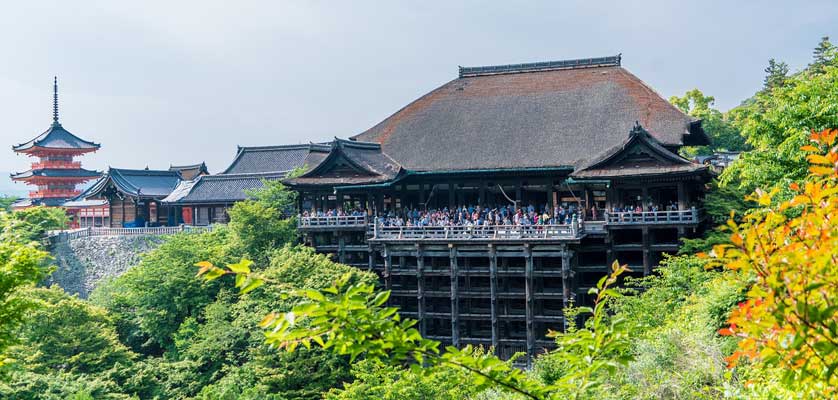
Kiyomizudera Temple, Kyoto
The Higashiyama South Walk is a captivating journey through one of Kyoto's most culturally rich and historically significant areas. This scenic route takes you from the iconic Silver Pavilion (Ginkakuji) in the north to the majestic Kiyomizu-dera Temple in the south, showcasing a stunning array of temples, shrines, and preserved historical districts along the way. As you traverse this path, you'll be immersed in the heart of Kyoto's cultural and spiritual center, experiencing firsthand the city's rich heritage and natural beauty. The walk offers a unique opportunity to explore traditional Japanese architecture, meticulously maintained gardens, and witness centuries-old customs still practiced today. Whether you're a history enthusiast, a nature lover, or simply seeking to experience the essence of traditional Japan, the Higashiyama South Walk promises an unforgettable journey through time and culture.
Route Overview and Key Attractions
The Higashiyama South Walk covers a diverse range of attractions, offering visitors a comprehensive glimpse into Kyoto's cultural tapestry. Beginning at the Silver Pavilion (Ginkakuji), the route winds its way south through several notable landmarks before concluding at Kiyomizu-dera Temple. Key attractions along this path include:
1. Silver Pavilion: A Zen temple featuring stunning gardens and architecture.
2. Philosopher's Walk: A picturesque canal-side path lined with cherry trees.
3. Nanzenji Temple: A sprawling Zen temple complex with beautiful gardens.
4. Chion-in Temple: Headquarters of the Jodo sect of Buddhism.
5. Maruyama Park: Kyoto's most popular spot for cherry blossom viewing.
6. Yasaka Shrine: A vibrant Shinto shrine at the edge of the Gion district.
7. Gion: Kyoto's famous geisha district.
8. Kiyomizu-dera Temple: A UNESCO World Heritage site offering panoramic views of Kyoto.
This route allows travelers to immerse themselves in traditional Japanese architecture, gardens, and customs while experiencing the unique atmosphere of each location. The walk can be completed in a full day, allowing ample time to explore each site thoroughly.
Starting Point: Ginkakuji (Silver Pavilion) and Philosopher's Path
The Higashiyama South Walk begins at the Silver Pavilion (Ginkakuji), a Zen temple renowned for its exquisite gardens and unique architecture. Despite its name, the pavilion is not actually silver, but it offers a serene start to your journey. From here, you'll embark on the Philosopher's Path, a charming stone walkway that follows a canal lined with hundreds of cherry trees.
The Silver Pavilion, built in 1482, was originally intended as a retirement villa for Shogun Ashikaga Yoshimasa. Its grounds feature meticulously maintained sand gardens, including the famous "Sea of Silver Sand" with its perfectly shaped sand cone. As you explore, you'll notice the striking contrast between the lush moss gardens and the austere sand landscapes, embodying the essence of Zen aesthetics.
Leaving Ginkakuji, you'll find yourself on the Philosopher's Walk, a two-kilometer path named after the philosopher Nishida Kitaro, who used to meditate while walking this route to Kyoto University. This tranquil walkway is particularly stunning during cherry blossom season in early April, when the overhanging cherry trees burst into bloom, creating a tunnel of soft pink blossoms. Along the path, you'll encounter several small temples and shrines, as well as charming cafes and craft shops, offering plenty of opportunities for leisurely exploration and refreshment.
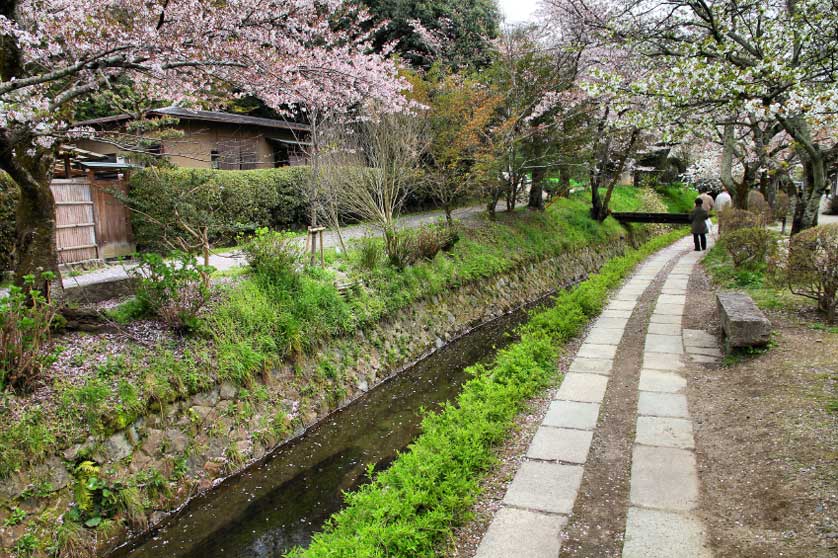
Philosopher's Walk is a favorite spot for cherry blossom viewing in Kyoto
Exploring Temples and Shrines Along the Way
As you continue your journey south from the Philosopher's Path, you'll encounter a series of magnificent temples and shrines, each offering unique insights into Japanese history, culture, and spirituality.
Nanzenji Temple is your next major stop. This expansive Zen temple complex features stunning rock gardens, intricate sliding door paintings, and a massive Sanmon gate that offers panoramic views of Kyoto. Don't miss the surprising brick aqueduct on the temple grounds, a remnant of Kyoto's modernization efforts in the Meiji period.
Further along, you'll reach Eikando Temple, famous for its autumn colors and unique statue of the Amida Buddha looking back over his shoulder. The temple's winding corridors and multiple levels provide an immersive experience in traditional Japanese architecture.
Next, you'll encounter the imposing Chion-in Temple, headquarters of the Jodo sect of Buddhism. Its massive Sanmon gate is the largest in Japan, and the temple grounds house Japan's largest temple bell, weighing a staggering 74 tons. The temple's grand scale and ornate decorations offer a stark contrast to the more austere Zen temples you've visited earlier.
As you approach the Gion district, you'll come across Yasaka Shrine, a vibrant Shinto shrine that plays a central role in Kyoto's famous Gion Matsuri festival. Its vermilion gates and lantern-lined paths create a magical atmosphere, especially in the evening when the lanterns are lit.
Navigating Preserved Districts: Nene-no-Michi, Ishibei-koji, and Ninenzaka
As you continue your Higashiyama South Walk, you'll find yourself immersed in some of Kyoto's most beautifully preserved historical districts. These areas offer a glimpse into the city's past, with their narrow streets, traditional wooden machiya houses, and atmosphere of old Japan.
Nene-no-Michi, or "Nene's Path," is a charming stone-paved lane named after Toyotomi Hideyoshi's wife, Nene. This picturesque street is lined with traditional tea houses, small temples, and craft shops. As you stroll along, you'll feel as if you've stepped back in time to the Edo period. The path leads to Kodaiji Temple, founded by Nene in memory of her husband, which boasts beautiful Zen gardens and a bamboo grove.
Nearby, you'll discover Ishibei-koji, often described as the most beautiful street in Asia. This narrow, atmospheric alley is lined with traditional wooden buildings, many of which now house exclusive ryokans (traditional inns) and high-end restaurants. The street's charm lies in its preserved architecture and the sense of exclusivity it exudes.
As you make your way towards Kiyomizu-dera, you'll encounter the famous narrow sloped streets with traditional shops known as Ninenzaka and Sannenzaka. These bustling pedestrian walkways are lined with shops selling traditional crafts, local delicacies, and souvenirs. The well-preserved wooden buildings and lack of modern signage create an enchanting atmosphere that transports visitors to old Kyoto. Be sure to try some local specialties like yatsuhashi (cinnamon-flavored mochi) or matcha (green tea) flavored treats as you explore these charming streets.
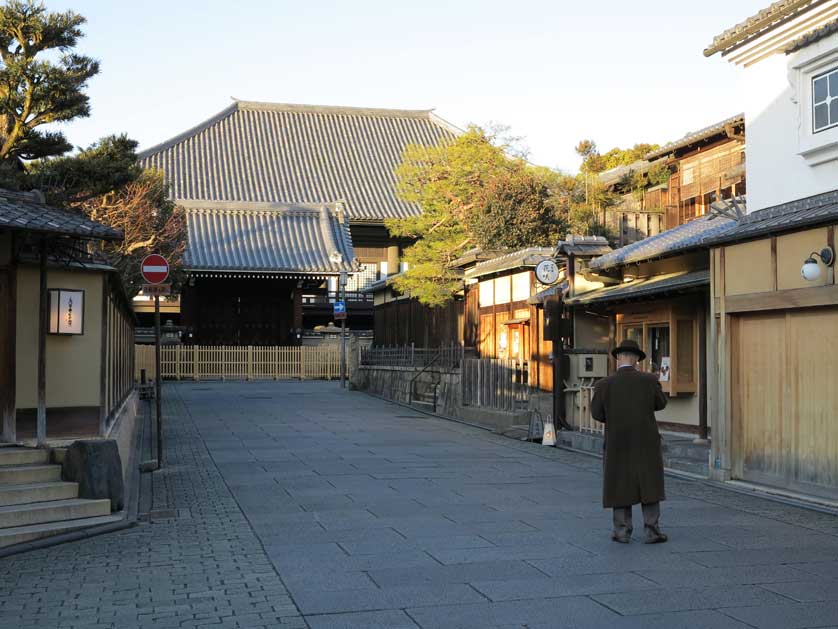
Nene-no-michi, Kyoto
Gion: Kyoto's Famous Geisha District
Gion, Kyoto's most famous geisha district, is a highlight of the Higashiyama South Walk. This historic neighborhood offers visitors a chance to step back in time and experience the world of geisha (known as geiko in Kyoto) and maiko (apprentice geisha).
As you enter Gion, you'll notice the distinct change in architecture. The streets are lined with traditional wooden machiya houses, many of which function as ochaya (teahouses) where geiko and maiko entertain their clients. Hanami-koji Street is the heart of Gion, where you're most likely to spot geiko and maiko hurrying to their evening appointments, especially around dusk.
One of the most picturesque spots in Gion is Shirakawa-minami Dori, a beautiful street that runs along the Shirakawa Canal. Lined with weeping willows and traditional tea houses, this area is particularly stunning during cherry blossom season.
For those interested in geisha culture, consider visiting the Gion Corner, where you can watch short performances of traditional Japanese arts, including a maiko dance. Alternatively, book a guided tour of the district to learn more about its history and customs.
Remember to be respectful if you do spot a geiko or maiko - they are not tourist attractions but working professionals. Avoid blocking their path or taking photos without permission. Instead, soak in the unique atmosphere of this historic district, perhaps enjoying a meal at one of the many traditional restaurants or stopping for a drink at a local bar.
Culmination at Kiyomizu-dera Temple
The Higashiyama South Walk reaches its grand finale at the iconic Kiyomizu-dera Temple, a UNESCO World Heritage site and one of Kyoto's most celebrated landmarks. Perched on the wooded hills of eastern Kyoto, Kiyomizu-dera offers breathtaking views of the city and serves as a fitting conclusion to your journey.
Founded in 780 AD, Kiyomizu-dera is renowned for its wooden stage that juts out from its main hall, standing 13 meters above the hillside. This stage, along with the main hall, was remarkably built without the use of a single nail, showcasing the incredible craftsmanship of Japanese carpenters. From this vantage point, visitors can enjoy panoramic views of Kyoto, particularly stunning during cherry blossom season in spring and the vibrant foliage of autumn.
The temple complex houses several other noteworthy structures:
- The Otowa Waterfall, where visitors can drink from three streams said to bring success, love, and longevity.
- Jishu Shrine, dedicated to the deity of love and matchmaking.
- The three-storied Koyasu Pagoda, believed to bring about safe childbirth.
As you explore Kiyomizu-dera, you'll notice the spiritual significance it holds for many visitors. People come to pray, draw fortunes, and partake in various rituals. The atmosphere is a blend of reverence and excitement, with the constant flow of visitors adding to the temple's vibrant energy.
Before leaving, take a moment to appreciate the temple's architecture, the natural beauty of its surroundings, and the sweeping views of Kyoto. It's a perfect spot for reflection on your journey through Higashiyama and the rich cultural tapestry you've experienced along the way.
Practical Tips for the Higashiyama South Walk
To make the most of your Higashiyama South Walk, consider these practical tips:
1. Start Early: Begin your walk in the morning to avoid crowds and have ample time to explore. Many temples open around 8:30 or 9:00 AM.
2. Wear Comfortable Shoes: The walk involves a lot of walking and some steep inclines, especially around Kiyomizu-dera. Wear comfortable, sturdy shoes.
3. Check Opening Hours: Verify the opening hours of temples and shrines you plan to visit. Some close earlier than others, especially in winter.
4. Carry Cash: Many smaller shops and some temples may not accept credit cards. Carry sufficient cash for entrance fees, souvenirs, and refreshments.
5. Use Public Transportation: Consider using the Kyoto subway or buses to reach the starting point at Ginkakuji and return from Kiyomizu-dera. The Kyoto Station is well-connected to both areas.
6. Stay Hydrated: Carry a water bottle, especially during summer months. Vending machines are available along the route for refills.
7. Respect Local Customs: Remember to be quiet and respectful in temples and shrines. Follow any posted rules about photography or behavior.
8. Consider a Guide: For deeper insights into the history and culture of the area, consider hiring a local guide or joining a guided tour.
9. Timing for Geisha Spotting: If you're keen to see geiko or maiko in Gion, time your visit around dusk when they're more likely to be heading to evening appointments.
10. Explore Side Streets: Don't be afraid to wander down smaller side streets. Some of Kyoto's most charming spots are hidden away from the main thoroughfares.
By following these tips and approaching the walk with an open mind, you'll be well-prepared to fully immerse yourself in the rich cultural experience that the Higashiyama South Walk offers. Remember to take your time, soak in the atmosphere, and enjoy this journey through one of Kyoto's most historic and beautiful areas.
